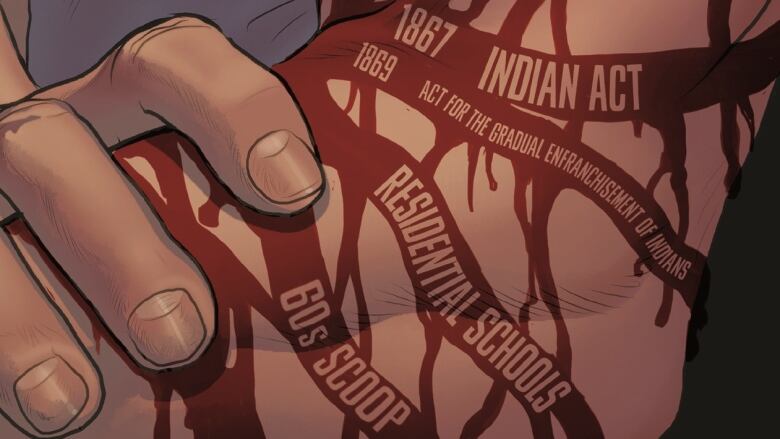Truth, dialogue & storytelling: Patti Laboucane-Benson on art and healing

Edmonton author Patti LaBoucane-Benson wrote the graphic novelThe Outside Circlein collaboration with illustrator Kelly Mellings.It's the story of gang life and healing for Indigenous people.She weighs in on this week's Cross CountryCheckup question:Does art offer the best path to heal historical wrongs?
Tenyears ago, if someone would have told me that a graphic novel about the healing story of a gang-affiliated, Indigenous man from Edmonton's inner-city would be a Canadian bestseller, I would have laughed.Yeah right.
For decades, advocates havebeenworking sometimes pleading,other times demanding that our prison system respect and embrace Indigenous healing as a pillar of rehabilitation. But nothing changed.
I poured my efforts into doctoral research, focused onhealinghistoric traumato find that simply put healing works. But the truth is, academics talking in coded, inaccessible language to other academics have yet to make any difference.
I was desperate to find a way to reach a broader Canadian public... tomake offender healing matter.
I was desperate to find a way to reach a broader Canadian public... tomake offender healing matter. Reading Chester Brown's graphic novelLouis Rielchanged everything.
In an act of pure rebellion and desire to work on a project that would make my heart sing I turned my sights on a graphic novel. I asked local artist Kelly Mellings, Greg Miller and Allen Benson to work with me, to include the findings of my research and to tell a story of historic trauma healing: The Outside Circle.
Mygoal in this project was to tell the truth notto sensationalize gang activity, but to help Canadians understand what drives young Indigenous men into prison, feel the gut-wrenching process of healing and believe that change is possible.
Mellingsproduced inspired illustrations, in part due to his undeniable talent, but also because he participated in ceremony, visited a residential school where he spoke with the survivors, and toured a federal prison.
The characters are composites of many men, women and families;The Outside Circleis essentially an homage to the irrefutable courage and resilience of Indigenous men who have taken theIn Search of Your Warriorprogramand have never returned to prison. Men who are doing their best to be good brothers, sons, fathers, grandfathers and uncles to stop the intergenerational transmission of historic trauma.
That Canadians have embracedThe Outside Circlestill blows my mind. I love that I've introduced readers to their first (literary) graphic novel and I hope it's not their last. Graphic novels can be a powerful combination of story and art that evokes strong emotionthey "hit you right in the feels," and it's hard to forget those stories.
It makes sense that Gord Downie and Jeff Lemire have collaborated to tell the story of Chanie Wenjack as a graphic novel and animated video; they will be powerful resources for teaching young Canadians our collective history, and the legacy of residential schools.

On a trip to a northern Alberta town, I was thrilled to meet a group ofGrade 10 boys described as resistant readers who had devouredThe Outside Circlein language arts class. They knew the story inside and out, and asked by far the most difficult questions I've ever had to field. They seemed to intimately understand the characters of Pete and hisbrotherJoey, and I did my best to focus on the transformational and redemptive aspects of the story.
I fought back tears when I saw the art projects the teachers had assigned displayed on the wall - students had drawn masks of their own pain - and their own journey. I returned home that weekend, my heart filled with gratitude that the House of Anansi Press has so enthusiastically promoted this graphic novel, thatMellingshad spent two year illustrating this story, and that something I've worked on has engaged both Indigenous and non-Indigenous people, created hope and a space for conversation.
I remain convinced that truth (evidence), dialogue (connectedness) and story-telling (art) are the most important tools in our collective reconciliation journey.
You can share your perspective on art and healing in the Cross Country Checkup conversation. Live on CBC Radio this afternoon, and always on our social media pages. Twitter|Facebook












_(720p).jpg)


 OFFICIAL HD MUSIC VIDEO.jpg)
.jpg)



























































































